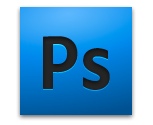Adobe’s Creative Suite and the applications that make it up—Photoshop, InDesign, Dreamweaver, Premiere, and a host of others—have been staples of many professional toolboxes for almost a decade now. The full suite itself has been available since September of 2003, and many of its applications have a history that reach back even further. Today at its MAX conference, however, Adobe announced a major shift in strategy for the software: boxed versions, along with their perpetual licenses, will no longer be available for any Adobe software newer than CS6. Going forward, subscribing to Adobe’s Creative Cloud service will be the only way to upgrade your software.
As with the boxed versions of the software, Adobe offers several different pricing options for Creative Cloud subscriptions: new users can buy a subscription at $50 a month with an annual commitment (or $75 month-to-month), which gets you access to the full suite of software plus, all of Adobe’s Edge services, 20GB of cloud storage. Users of Creative Suite versions 3 to 5.5 can get their first year of service at a reduced rate of $30 a month for the first year, while current CS6 users can subscribe for $20 a month for the first year. For individuals, these subscriptions buy you the right to use the software on up to two different computers, same as the boxed versions.
MORE: Adobe’s Creative Suite is dead, long live the Creative Cloud | Ars Technica.

